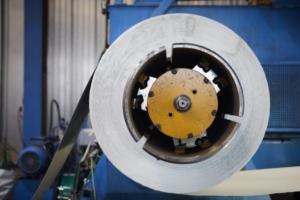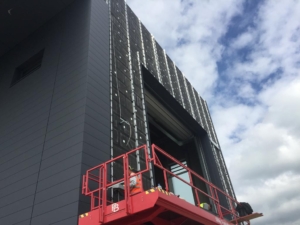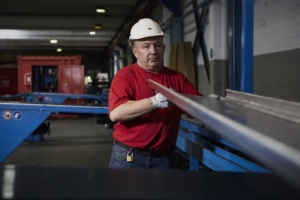The Hazards of specification switching
Written by Adrian Whitefoot
In recent years building safety has, quite rightly, been put under a spotlight, in particular as a result of the Hackitt Review following the Grenfell Tower tragedy. However, specification switching, often done on the basis of cost, can have serious implications for safety. Here, Adrian Whitefoot at Kalzip looks at the importance of ensuring building envelope systems perform as intended and that system integrity is maintained.
 (© Kalzip GmbH)
(© Kalzip GmbH)
The commercial realities of construction projects mean that there is often a need to reduce costs where possible to meet financial constraints. This pressure has been intensified in the past year by the rising costs of materials. As a result, the specified roofing or façade system may be switched for a lower cost option. There is often an assumption made that because two systems look the same, and even use the same raw materials, that they are equivalent. However, the performance of the two can vary significantly and this can impact the building in a number of ways.
For example, an aluminium rainscreen cladding system specified for a building may have achieved a Euroclass A1 or A2 ‘non-combustible’ fire performance rating. While another aluminium cladding system may look similar, it will not necessarily have the same fire performance. This is because it may include a type of insulation that is rated as combustible or feature a different construction that does not limit fire spread. This means the building may be at greater risk in the event of a fire, especially if originally designed around a non-combustible cladding solution.
 (© Kalzip GmbH)
(© Kalzip GmbH)
In roofing
With regard to roofing, an unsuitable system can impact the safety of those who have to access the roof during the life of the building, such as for maintenance and inspection of rooftop equipment. Any accessible roof areas must have the required strength, and this should have been considered during the design and specification phase. A similar but not technically equivalent system may not be designed for this purpose and could fail, potentially causing serious and even life-threatening injuries.
Wind loading
A further building safety issue when specifications are switched is wind loading. Both roofing and façade systems will be specified to withstand a calculated wind loading and predicted weather conditions. If the substituted system does not have the structural resistance, the consequences can be serious. During high winds, which many parts of the UK have already experienced this year, the structure can fail, and sections may detach from the building. This not only poses a risk to people in and around the building but can also have serious cost implications for both the repair of the roof and addressing any damage caused to the building’s structure and interior.
 (© Kalzip GmbH)
(© Kalzip GmbH)
Accuracy is key
The reality is that specifications may have to be reviewed during a project. But it is essential that the performance data of any potential new system is interrogated carefully to ensure that it is equivalent in all areas to the specified system. Manufacturers should be able to provide full and detailed information on the performance of its systems as well as relevant test data, including certifications from independent third parties, such as the British Board of Agrément (BBA). Leading manufacturers will have test data for their systems in a wide variety of situations and with various approved configurations.
It is also crucial to remember that certifications and performance data only apply to the whole system, with the exact components that were used during testing. Something as simple as an alternate type of fixing or different thickness of insulation can change the way it performs. Contractors should be extremely wary of any supplier who provides test data for a system where any components have been substituted. Swapping out a particular element invalidates the certification as well as any manufacturer’s warranty and can mean the contractor is held responsible for any failures or non-compliance.
Installation
Furthermore, it is also recommended that a system is only installed by a contractor team who is trained on that specific system. Although they may have experience with a generic type of system, there is no guarantee that the installation process is the same. Manufacturers will often offer training on their systems to help ensure installation is in line with the recommended procedure and help contractors to complete it as efficiently as possible. Leading manufacturers will also provide technical support throughout the installation and carry out inspections to ensure that it is being installed as designed.
Building safety can easily be compromised when specifications are switched without due care. When considering an alternative roofing or façade system, it is important to look carefully at the details to ensure all performance criteria are met and, importantly, that the data applies to the whole system in question.
Download here:
Kalzip PR Hazards of Specification Switching
Contact
Kalzip GmbH
Yannick de Beauregard
Kalzip Marketing
August-Horch-Str. 20 – 22
56070 Koblenz
Phone: +49 261 9834 0
Fax: +49 261 9834 100
E-Mail: yannick.de-beauregard@kalzip.com


